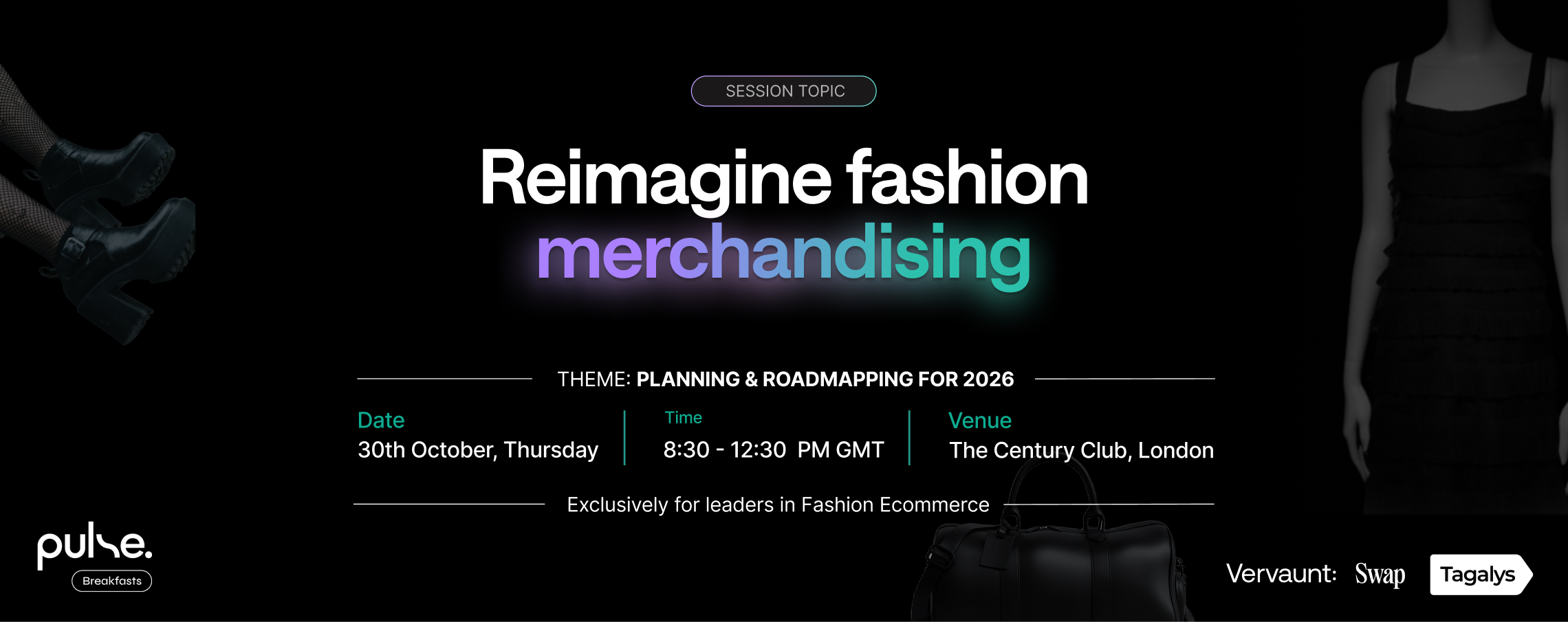A skyrocketing rate of abandoned carts coupled with plummeting advertising returns has made it more difficult than ever for retailers to capture potential shoppers' attention and convert them. Moreover, with abundant options and conveniences available today, customers aren't willing to compromise (unless it's for the right brand). Growing inclination towards how to buy, where to buy, and when to buy is compelling retailers to rapidly embrace trends and stay on track to engage their customers and grow their eCommerce businesses.Thus, this blog discusses what trends emerged or grew prominence in 2022. This gives retailers insight into where shoppers are interested and how they can offer exceptional customer experience.
eCommerce Marketing 2022 Trends
1. AR and VR
Augmented reality (AR) and virtual reality (VR) are often used interchangeably but are two different concepts. While AR creates an augmented reality in the real world, VR creates an immersive experience that shuts out reality. In other words, AR is when a shopper can point their smartphone camera at an empty space and see how the coffee table would look in their living area. VR, on the other hand, is a shopper wearing virtual reality glasses and walking through the physical stores right in the comfort of their homes.AR and VR have seen tremendous growth in 2022. It offers shoppers the convenience of shopping from the comfort of their homes while still feeling how the product would look and feel in real life. Over 90% of Americans currently use or would prefer using AR for shopping, according to Google.
2. Artificial intelligence (AI)
AI, or artificial intelligence, can help shoppers find products easily and boost customer experience. For example, AI can enhance product recommendations and personalized shopping experiences, elevate site search, and more. Some other uses of AI are chatbots, personalized shopping, and more, which are discussed further in this article.Finally, AI can be used to get a better understanding of big data, understand the customer journey, and enhance customer experience, which eventually leads to a satisfied customer.
3. Omnichannel marketing
Omnichannel means having a presence on multiple channels like a physical store, website, application, social media presence, and more. But it doesn't stop there. To create an omnichannel experience, retailers must integrate all these channels and communicate consistently. For example, a shopper might discover a brand on Instagram, check out their shoppable store, visit their website to discover further, and finally purchase something on their smartphone. The idea of omnichannel marketing is to provide shoppers with the convenience of buying anything from anywhere they want at any time.
4. Personalization
In a space where shoppers are inundated with making messages from every direction, personalization helps retailers stand out in the crowd. In fact, customers are most willing to share their personal information like email, gender, and name with brands to get personalized shopping experiences and advertisements. Personalization drives loyalty, as 72% of customers are more likely to be loyal to a brand if offered a personalized experience along with rewards and benefits.And 67% of Google feed users have purchased or planned to purchase something after seeing a personalized ad on their feed.Therefore, personalization has gained momentum in 2022 and is expected to rise in the coming years.
5. User-generated content
With 72% of customers considering customer reviews more credible than a brand's in-house promotion, UGC (user-generated content) has grown in prominence in 2022. This means brands can no longer rely solely on their branding and communication; collecting and showcasing reviews from their customers helps in boosting trust with new customers.Furthermore, UGC can be an incredible marketing resource to share across the website and social media. Reviews with pictures or videos or shoppers using the product boost credibility and enhance the experience.Finally, UGC leads to higher trust in the brand, increased customer lifetime value, and boosts visibility.
6. Conversational marketing
One of the biggest advantages of chatbots is answering questions instantly, 24x7. But there's more to it. The use of chatbots has grown exponentially in the past years. Besides answering FAQs, they can assist shoppers in their buying journey, suggest relevant products, notify them when a product is back in stock, enable multi-channel communication, automate customer support, offer post-sales support, and much more. Gartner even predicts that by 2027 "chatbots will become the primary customer service channel for roughly a quarter of organizations."Finally, conversational AI can be helpful in understanding the customers’ purchasing journey, help enrich the customer's buying experience and boost sales. So retailers should not miss out on this trend.
7. Influencer marketing
Influencer marketing is when brands collaborate with influencers to promote their products. Some commonly used channels are YouTube, Instagram, and TikTok. The biggest advantage of this strategy is that influencers already have an engaged audience base and 61% are likely to trust influencers on social platforms. Furthermore, 62% of marketers claim they've seen increased sales when working with social media influencers. Nano-influencers have a stronger connection with their audience, with a 5% engagement rate in 2020.Lastly, 56% of marketers say YouTube is the most important type of content for influencer marketing.
8. Sustainability in eCommerce
The pandemic has stirred the need for sustainable manufacturing and delivery of eCommerce products. 52% of consumers worldwide say sustainability has grown more important after the pandemic.Reducing carbon footprint, using eco-friendly raw materials, and sustainable shipping have grown in prominence. Therefore, brands must be aware of their environmental impact and take conscious steps to decrease any adverse effects to win customer trust and loyalty.According to a study by BigCommerce, 41% of Gen Z consider sustainability as very important when making a purchase decision, followed by Millennials (33%), Gex X (29%), and Baby Boomers (24%). The report
9. Flexible payment options
Gone are the days when shoppers would walk into a physical store, get their products, and payout with cash. With the rise of omnichannel and mobile commerce, shoppers want flexible payment options.BNPL (buy now, pay later) options increased 166% YoY in March 2021, according to Adobe's 2021 Digital Economy Index.Moreover, BNPL accounted for 2.9% of global eComm transactions in 2021, which is projected to reach 5.3% by 2025.
10. BOPIS, BORIS, ROPIS
These terms might look perplexing, but they're, in fact, a convenient way shoppers are planning to purchase moving forward. BOPIS stands for buy online, pick up in-store. This allows shoppers to opt for a convenient purchase plan online and pick up the product at the store at their comfort.BORIS stands for buy online return in store. While getting products delivered to the doorstep is an incredible option, returning often is tedious. But, stores can offer their customers the convenience of returning the product in their nearest store.ROPIS stands for reserved online, pick up in-store. This is an excellent solution for limited edition products or digital gadgets that have limited availability. Shoppers can reserve their items online and pick them up at the store, knowing that their products will not go out of stock.
11. Mobile commerce
It's no surprise that people are constantly glued to their screens for every waking hour—working, ordering food, shopping online, discovering interesting content, and more.This presents a great opportunity for retailers to capitalize on mobile commerce.According to a recent Forbes article, by 2024, m-commerce sales will be over $570 billion, representing 53% of total e-commerce sales.
12. Headless commerce
Headless commerce is exactly what it sounds like - it separates the front end (the head) of the eCommerce sites from its back end. The main purpose of doing so is flexibility. Moreover, decoupling the front end from the technical backend enables creating multiple front-ends from a single backend, delivering rich content to the customers, and using API to deliver an exceptional experience.Not only that, but it allows businesses to optimize their processes, right from taking the order to the fulfillment stage; it also makes design/UI changes to smart IoT devices much easier and faster. This makes the process of creating or changing the front ends easier, faster, and seamless.
13. Voice search
Amazon's Alexa, Google Assitance, Apple's Siri, and Microsoft's Cortana are some of the most popular virtual assistants. Moreover, according to Statista, by 2024, there will be 8.4 billion voice assistance in use.In eCommerce, voice search will play a significant role, enabling shoppers to search conveniently.
Challenges of eCommerce in 2022
The pandemic changed the growth trajectory of eCommerce businesses. But, here are some of the challenges retailers are left with.
1. Escalating customer demands
It's no doubt that attracting customers is getting increasingly difficult. If retailers don't embrace new trends quickly, chances are that customers will move to another brand for better customer service, shopping experience, and more.
2. Data security
eCommerce collects and stores huge amounts of data. Maintaining the security of this data is crucial to never losing customers' trust. Especially with Apple's iOS 14.5 privacy updates, cross-app data sharing is prohibited unless users opt in.
3. Implementing Omnichannel
While Omnichannel marketing is becoming table stakes, implementing the same is often a big challenge for retailers. Collecting and understanding data, managing consistent communication, and properly integrating various channels are some of the challenges eCommerce retailers face.
4. Plummeting advertising returns
As more entrepreneurs enter the eCommerce space, the advertising costs are going through the roof, and ROAS (return on ad spend) is coming downhill. Recent research shows that advertising costs on Facebook rose 47% more in Q3 2021, as compared to 33% in Q3 2019. How brands can accelerate their business using these eCommerce trendsThe pandemic has pushed eCommerce innovation off the edge and compelled retailers to think creatively and provide unique solutions to shoppers. These trends put the customers in the driving seat and allow them to take charge of their shopping experience - from how they wish to pay to where they shop and more; focusing on customers will take retailers a long way.However, jumping on every trend is not suggested because this way, retailers might stretch their resources thin and, worse, take a toll on customer experience.Therefore, retailers must first analyze their business needs, if it fits within their budget, and estimate their ROI. Furthermore, taking customer feedback is vital in ensuring retailers embrace trends that add value to their shoppers' lives.
In a nutshell
eCommerce is evolving at lightning-fast speed. From online and BNPL payment methods to artificial intelligence and personalization dominating the industry, retailers need to fasten their seatbelts.While the above-mentioned trends have dominated 2022, we're sure they're here to stay and continue to rise.
What's next for eCommerce?
As mentioned, eCommerce is changing rapidly. Trends like using cryptocurrency to make payments online, use of NFTs, and Metaverse are also slowly making their way into the eCommerce landscape.At the end of the day, retailers must look into the future and embrace trends to simplify shopping for their customers and provide an unparalleled experience.














.svg)
.svg)
.svg)
.svg)
.svg)
.svg)



.png)

.png)
